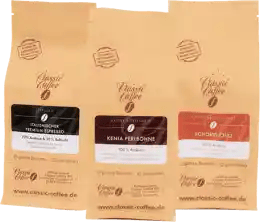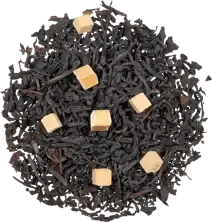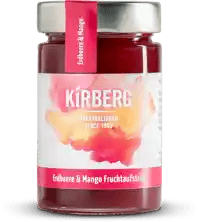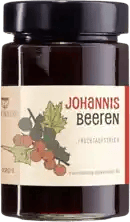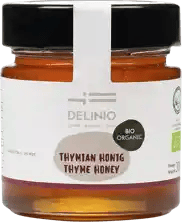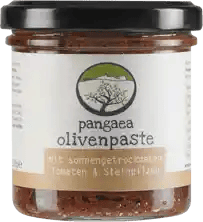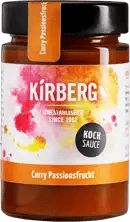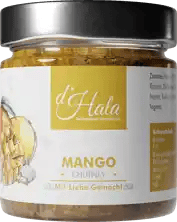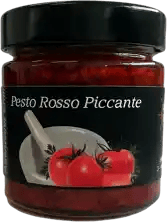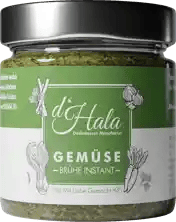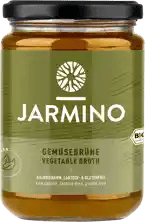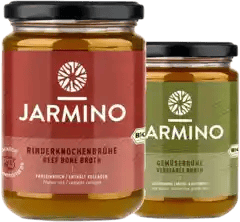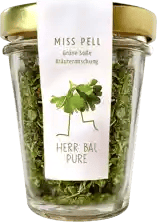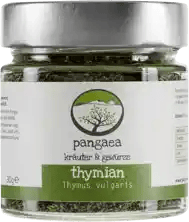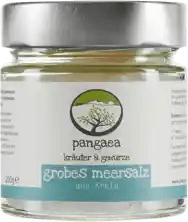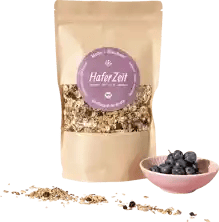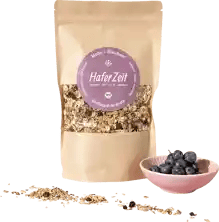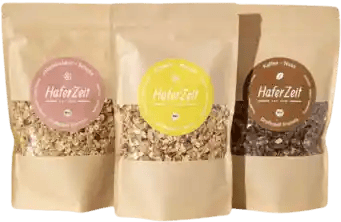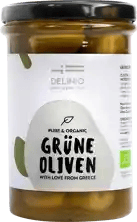Quality instead of quantity!
8,500 independent products
No mainstream
8,500 independent products
Chutney: The all-rounder in the kitchen
Imagine you have a sauce that can do almost everything: Seasoning, refining, dipping and even more. That's exactly what chutney is, the secret star in your kitchen. Originally from India, this spicy marmalade has made a name for itself all over the world. Why? Because chutney, with its unique blend of sweet, sour and spicy components, adds that certain something to pretty much any dish. Whether as a dip for snacks, as an accompaniment to hearty main courses or as a sophisticated spread - chutney is a real all-rounder.
Chutney is usually based on fruit such as mango, apple or pineapple, which is blended with vinegar, sugar and various spices to create a harmonious composition. The result? A taste explosion that sends your senses on a culinary journey around the world. The spectrum ranges from sweet and fruity to fiery and spicy, so there's something for every palate. And the best thing? Chutneys are not only delicious, but also a real eye-catcher on your plate. Their bright colors make every dish a visual highlight.
So the next time you're looking for a way to spice up your meal, think chutney. It's the perfect partner for meat, fish, vegetables and even cheese. Try it out and be inspired by the variety of chutneys!
Chutney: the all-rounder in the kitchen
Now comes the good news for all chutney fans: you can find a huge selection of chutneys online, much larger than in any store. You can find chutneys in every conceivable flavor online. From classic mango chutney and exotic pumpkin chutney to innovative creations with apple and cinnamon - the choice online is limitless.
The variety is not the only advantage of buying chutney online. You also save time and effort. With just a few clicks, your favorite chutney lands directly in your shopping cart and shortly afterwards on your doorstep. No lugging around, no queuing at the checkout, just pure convenience.
What is chutney?
Chutney sounds exotic and exciting, doesn't it? But what exactly is it? Quite simply, chutney is a type of spicy jam made from a mixture of fruit or vegetables, sugar, vinegar and spices. Chutney originated in India, where it is an indispensable part of every meal. What makes chutney so special is the unique combination of sweetness, acidity and spiciness. Chutneys come in many different varieties, from fruity-sweet to fiery-spicy.
The variety of chutneys is impressive: from mango and apple to plum and pumpkin - there is hardly a fruit or vegetable that cannot be made into chutney. The addition of vinegar and sugar ensures a long shelf life, while spices such as ginger, chili, garlic or exotic spice blends give each chutney its unique flavor.
Chutney is not only delicious, but also versatile. It goes perfectly with curries, rice dishes, as a side dish with meat and fish or simply as a dip with bread and crackers. With chutney, you can add variety to your plate and give your dishes a whole new dimension of flavor.
How is chutney made?
Making chutney is an art in itself, but don't worry, it's easier than you think! Basically, it's similar to making jam, but with a spicy twist. First you choose your base, i.e. the fruit or vegetables. Cut them into small pieces and put them in a pan with sugar and vinegar. This is where the magic begins: the flavors combine through slow cooking and an intense taste is created.
Now comes the most exciting part: the spices. This is where you can get creative. Popular spices for chutney are ginger, chili, garlic, mustard seeds, cinnamon and cloves. But you can also experiment and try out your own spice combinations. The cooking process lasts until a thick, jam-like consistency is achieved. The chutney is then bottled hot in sterilized jars to ensure a long shelf life.
The great thing about homemade chutney is that you have control over the ingredients. You decide how sweet, sour or spicy you want it to be. It's also a great way to make use of seasonal fruit and vegetables and create your own unique flavor creations.
What can you eat chutney with?
Now it's getting tasty: what can you actually eat chutney with? The answer is simple: almost anything! Chutneys are so versatile that they go with an incredible range of dishes. Here are a few ideas to inspire your taste buds:
First of all, chutneys are perfect with Indian dishes like curries and dals. They bring a fruity freshness and a pleasant spiciness that complement the flavors of the dish wonderfully. But chutney has also found its place in Western cuisine. Try it with grilled meat or fish, as a dip with cheese or as a delicious spread on sandwiches. Chutney also goes perfectly with cold dishes and can be a great addition to your next buffet.
And for those who like to experiment: Chutney is also a fantastic ingredient in dressings and marinades. It adds an exotic touch to salads and marinated vegetables and provides an exciting variety of flavors. The possibilities are endless, so be creative and try out new combinations!
What is the difference between chutney and relish?
Chutney and relish are closely related, but there are a few differences. Chutney is usually cooked for longer, so it has a thicker, jam-like consistency. It is often sweeter and has a wide range of flavors, from sweet to sour to spicy. Relish, on the other hand, is only cooked briefly, giving it a crunchier texture and fresher taste. It is usually less sweet and is often appreciated for its tart and spicy properties.
Another difference lies in the ingredients. While chutney typically consists of a mixture of fruit, sugar, vinegar and spices, relish is often made with vegetables such as cucumber, onions or peppers. Relish is ideal as an accompaniment to burgers, hot dogs and other grilled dishes, while chutney is a great choice for savory dishes such as curries, rice dishes and cheese platters.
Ultimately, both chutney and relish are delicious additions to your culinary repertoire. It's worth trying them both and discovering which flavors and textures you like best!
Where does chutney originally come from?
Chutney has a fascinating history that takes us to India, the land of colors, spices and intense flavors. Originally, chutney is a product of traditional Indian cuisine. In India, chutney is made from a variety of ingredients, often with regional fruits, herbs and spices. These spicy pastes or sauces have always been an important part of Indian food culture and were traditionally served with almost every meal to add flavor and texture.
The term 'chutney' is derived from the Hindi word 'chatni', which means 'to lick'. And that's exactly what you want to do when you try these delicious, flavorful sauces! Over time, and particularly during the British colonial period, chutney became popular in Europe and has since established itself in many cuisines around the world.
Modern chutney as we know it today has evolved, but its roots and the basic character of these delicious sauces are still deeply rooted in Indian cuisine. Whether sweet, sour or spicy, chutney always brings a touch of India to our plates.
What types of chutney are there?
The world of chutneys is as colorful and diverse as an Indian spice market! There are countless varieties based on different fruits, vegetables and spice combinations. Here are some popular types of chutney:
Mango chutney is probably the best known and combines the sweetness of ripe mangoes with a zesty spice. Apple chutney, with its blend of sweet apples and hot spices, is another classic. For lovers of the exotic, there is pumpkin chutney, which is particularly popular in the fall. Tomato chutney, with its fresh and slightly sour note, is perfect for the summer months.
But there is so much more to discover: Fig chutney, plum chutney, pear chutney and many more. Each variety has its own distinctive character. From sweet and mild to hot and spicy - there is a chutney to suit every taste. The variety is almost endless and always offers new taste experiences.
One thing is certain: with chutney, there is never a dull moment in the kitchen. Whether as an accompaniment to savory dishes, as part of a cheese platter or simply as a spread on bread - chutney is a real all-rounder that adds a special touch to any meal.
Which varieties are the most typical?
Among the huge variety of chutney types, there are a few that are particularly popular and widely used. Mango chutney, with its perfect balance of sweetness and spiciness, is a real classic and goes perfectly with curries and rice dishes. Apple chutney, with its fresh and slightly tart note, is a favorite with cheese and cold meat dishes. Then there is tomato chutney, which is ideal with burgers and grilled meat thanks to its spicy tanginess and fruity freshness.
Pumpkin chutney, with its rich, autumnal aroma, is perfect for the colder months of the year. Fig chutney, sweet and luxurious, is a real treat with mature cheeses. Pear chutney, with its subtle sweetness and gentle spiciness, is an excellent accompaniment to ham and other smoked meats.
These typical varieties are just a small glimpse into the world of chutneys. They are a great starting point for exploring this delicious, spicy world and discovering your own favorites.
How long and where is the best place to store chutney?
Storing chutney correctly is important to preserve its full flavor and quality. Unopened jars of chutney will usually keep for a very long time, often up to a year or longer if stored in a cool, dark place. A kitchen cupboard or pantry is ideal for this. It is important to protect them from direct sunlight and heat sources to preserve the quality of the chutney.
Once opened, you should store chutney in the fridge. It will usually stay fresh for a few weeks to a month. Make sure you always use clean spoons to remove the chutney from the jar to avoid contamination. The consistency of the chutney may thicken slightly in the fridge, but this will not affect the taste.
A little tip: If you find that you are not using up your opened chutney quickly enough, you can also freeze it. This will keep it for longer and you can simply defrost and enjoy it when needed.
Make your own chutney
Making your own chutney is not only a creative and satisfying experience, but also gives you the freedom to experiment with different flavors. You start by choosing your fruits or vegetables. Mango, apple, tomato and pumpkin are popular, but you can also try more exotic varieties. Add sugar to create sweetness and vinegar to add a sour note.
Spices are at the heart of every chutney. Classics such as ginger, garlic, cinnamon, cloves and mustard seeds are popular, but don't hesitate to experiment with other spices. The secret to a good chutney lies in the balance of flavors - a harmonious blend of sweetness, acidity and spiciness. Cook the mixture slowly until it thickens and reaches a jam-like consistency.
Fill the homemade chutney into sterilized jars and seal. You can store it this way for several months. Homemade chutney also makes a wonderful gift for friends and family, especially if you prepare it with a personal touch such as a special spice or an unusual fruit combination.
Simple chutney recipe to make yourself
Fancy making your own chutney? Here's a simple basic recipe that you can adapt as you wish. You will need:
- 500 g fruit or vegetables of your choice, finely chopped
- 250 g sugar
- 120 ml vinegar (apple cider vinegar or white wine vinegar)
- Spices of your choice (e.g. ginger, garlic, cinnamon, chili)
- A pinch of salt
This is how you proceed:
- Cook the fruit or vegetables with sugar, vinegar and salt in a large saucepan. Stir the mixture until the sugar dissolves.
- Add the spices and let the chutney simmer over a low heat. Stir occasionally until it thickens and reaches a jam-like consistency. This can take up to an hour.
- Pour the hot chutney into sterilized jars and seal tightly. Leave the chutney to cool and then store in a cool, dark place.
This basic recipe is a great place to start. Experiment with different fruits, vegetables and spices to create your perfect chutney.
Brilliant!

Bitte bestätige deine Anmeldung noch eben - du hast eine Bestätigungsmail von uns. Klicke darin auf den Link. Danach bekommst du deinen Rabattgutschein.


























































